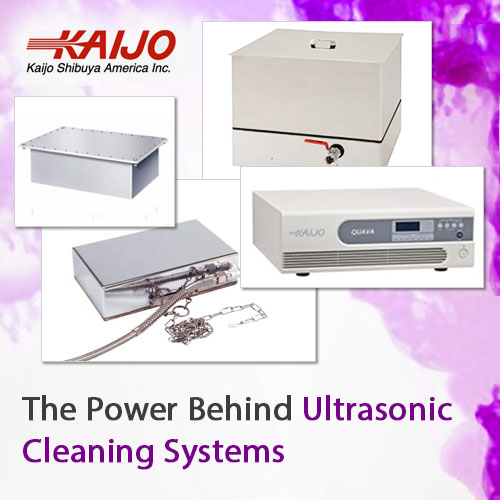The Power behind Ultrasonic Cleaning Systems
December 13, 2017

Coatings of grime, grease and sludge are only some of the stubborn contaminants that industries everywhere struggle with. The conventional approach to the cleaning and maintenance of equipment has always been environmentally hazardous, involved harsh chemicals, difficult protective equipment for workers, and costly compliance procedures. Few alternatives have proven viable.
Ultrasonic cleaning technology today, however, has finally arrived, and offers a solution. An affordable and highly effective advance in the area of safe industrial cleaning, these systems have been proven for years, with wide use seen since the 70s. From antiques to the delicate components of mechanical watches and electronic equipment, and from greasy engine blocks to industrial mechanical equipment, ultrasonic cleaners are universal in their usefulness. They are even used to clean the thousands of window blinds that cover windows in offices and public buildings everywhere.
Sound, not substance
Ultrasonic cleaning relies on the idea that physical removal of stains, oil and soil from materials does not require physical contact. Instead, this cleaning method relies on the principle of cavitation.
At its most basic, the principle of cavitation is simple enough — it describes the phenomenon in which disturbances in liquids lead to the creation of short-lived cavities bubbles of gas or vacuum. In certain scenarios involving high levels of energy, the destruction of bubbles so formed generates considerable amounts of force. The impact created by such imploding bubbles powers the ultrasonic cleaning method.
At its simplest, an ultrasonic cleaning appliance is a tank fitted with a special loudspeaker capable of generating sound waves in the ultrasonic frequency spectrum. At tens of thousands of cycles a second, this spectrum lies far above the human auditory threshold.
When high-energy ultrasonic sound waves pass through a liquid like water, they create the desired disturbance, leading to the formation of millions of microscopic bubbles. As these bubbles form and implode many times each second, they create the cavitation energy needed to knock dirt, grease, debris and other contaminants off the surface of any article immersed. It is as if there are millions of microscopic chisels knocking dirt off. The cavitation energy created by these bubbles, however, is gentle, even as it removes tough contamination.
Choosing the right kind of ultrasonic cleaning technology
The transducers used in ultrasonic cleaning systems are specifically designed for the generation of high levels of ultrasonic sound energy. There are two kinds of technology in wide use today, magnetostrictive and piezoelectric, the former being a more conventional approach than the latter.
In magnetostrictive transducers, layered metals induced to rapidly expand or contract when subjected to varying magnetic fields. The action creates ultrasonic sound waves. These are robust transducers, but are limited in their versatility. They are rarely able to create ultrasonic sound energy in the spectrum over 30 kHz.
Piezoelectric transducers are a newer technology. These devices exploit the piezoelectric principle — which describes the ability of objects to change shape when exposed to electric fields. In piezoelectric transducers, crystals capable of such physical transformation are attached to metal plates that amplify their action. Piezoelectric transducer technology is far more suitable for ultrasonic cleaning simply because it is able to create ultrasonic sound energy at very high frequencies. This makes it far more versatile and energy-efficient.
Kaijo Piezoelectric ultrasonic cleaning systems
The higher the ultrasonic sound frequency, the smaller the bubbles created, the gentler the action, and the more precise the cavitation action. Kaijo’s ultrasonic cleaning systems employ piezoelectric transducer technology for its inherent superiority. With transducers that produce ultrasonic energy from 20 kHz in the ultrasonic range to over 1.5 MHz in the megasonic range, Kaijo’s ultrasonic cleaning systems offers versatile cleaning ability. With power at these sonic spectrums ranging up to 1200 W per transducer, these are among the most versatile cleaning technologies in the world.
With more than 65 years in the industry, Kaijo is, today, at the forefront of the ultrasonic cleaning industry, and offers a range of quality ultrasonic cleaning tools for every industry need. From the electronics industry to the medical industry and industries using heavy mechanical equipment, Kaijo offers clients both the right tools and expert advice in making the correct choice. Whatever your industrial need, Kaijo’s turnkey Ultrasonic Cleaning Systems provide a cost effective solution. Specialists at Kaijo also help analyze a customer’s cleaning requirements and propose the most effective ultrasonic cleaning solutions based on their specific cleaning requirements.





